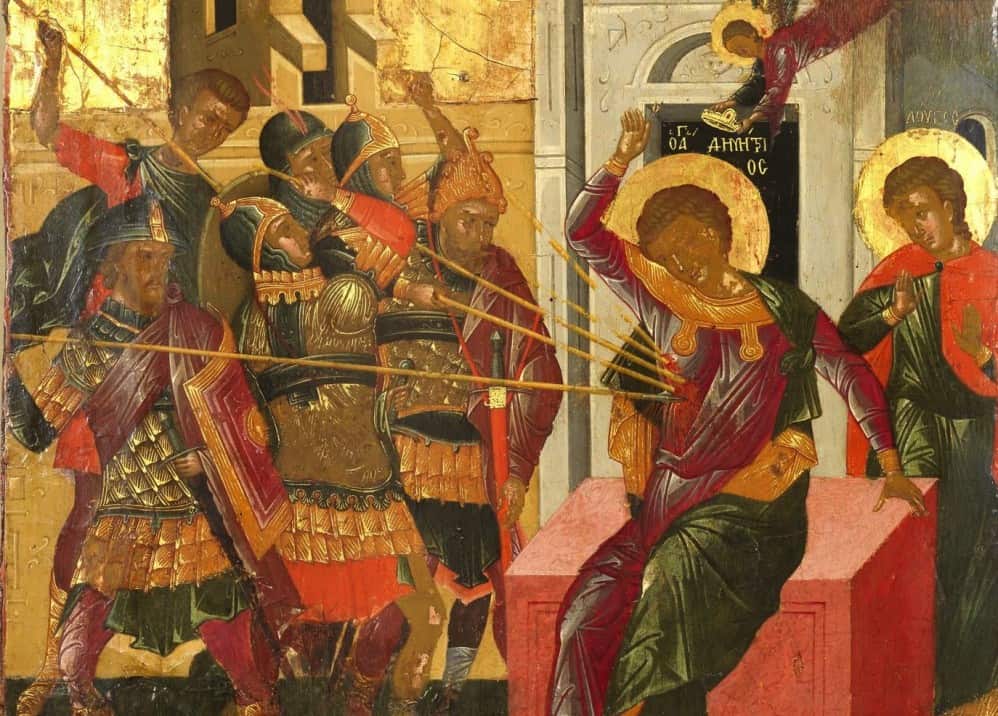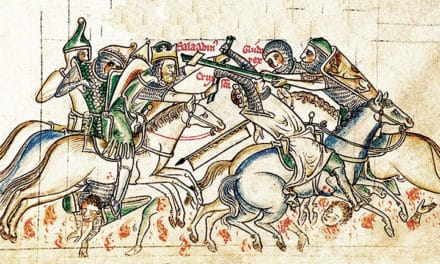This 107th episode is titled, “Reform Around the Edges.”
It’s difficult living in the Modern World to understand the Late Medieval norm that a State had to have a single religion all its subjects observed. You’d be hard pressed to find a European of the 16th C who didn’t assume this to be the case. About the only group who didn’t see it that way were the Anabaptists. And even among them there were small groups, like the extremists who tried to set up the New Jerusalem at Munster, who did advocate a State Church. Mainstream Anabaptists advocated religious tolerance, but were persecuted for that stance.
As we’ve seen in the story of the Church in Germany and as was hammered out in the Peace of Augsburg, peace was secured by deciding some regions would be Lutheran, others Catholic by the principle of cujus regis eius religio [coo-yoos regio / ay-oos rel-i-gio] meaning, “Whose realm, whose religion.” The religion of a region’s ruler determined that regions subjects’ religion. Under Augsburg, people were supposed to be free to relocate to another region if a ruler’s religion didn’t square with their convictions.
Sounds simple enough >> for moderns who are highly mobile and have little sense of the historic connection between identity and place. Many think nothing today of packing up and moving to a new place across town, or across a state, nation, or even some other part of the globe. Not so most Europeans for most of their history. Personal identity was intimately connected to family. And Family was identified by location. That’s why long before people had surnames, they were identified by their town. John of Locksley. William of Orange. Fred of Fillsbury. Families built a house and lived in it for many generations. Losing that home to whatever cause was one of the great tragedies that could befall one. It was a betrayal of previous generations who’d handed down both a family name and home, as well as all those future generations who now would have no home to call their own.
On the surface, the Peace of Augsburg sounded like a sound solution to the religious conflicts that raged after the Reformation. But it was in fact, a highly disruptive force that ultimately helped spark the Thirty Years War.
The wars of religion that washed over Europe in general and France in particular is evidence that the rule a region could have but one religion wasn’t workable. Even the Edict of Nantes, passed by French King Henry IV after the bloody St. Bartholomew’s Day Massacre, only guaranteed the survival of French Protestantism by granting a number of Protestant cities as enclaves in an otherwise Roman Catholic realm.
We’ve given a thumbnail sketch of the spread of the Reformation over Germany, France, England, Scotland, the Low Countries and in Scandinavian.
Let’s take a look now at Spain.
Before the Reformation reached the Iberian Peninsula, many hoped the Spanish Church would lead the way in long-overdue reform. Queen Isabella’s faith was earnest. She and Cardinal Jiménez de Cisneros implemented a massive reform—including a renewal of biblical studies centered on the Complutensian Polyglot Bible. Today a polyglot is known as a parallel Bible, where multiple versions of the bible are arranged in side-by-side columns for comparison. But in parallel Biblr, these version are all the same language. A polyglot is the comparison of different languages. The Complutensian Polyglot had the Hebrew, Latin and Greek texts of the OT as well as the Aramaic of the Torah. The NT was both Greek and Latin. Spain also had many humanists scholars similar to Erasmus—some of them in high places—who longed for reform.
The arrival of the Protestant Reformation saw attitudes in Spain changed. At Worms, the upstart monk Martin Luther defied Emperor Charles V, who just happened to be King Charles I of Spain. Charles became the champion of opposition to Protestantism. The Spanish Inquisition, previously aimed at Jews and occultists, turned its attention toward those calling for reform and anything that smacked of the now-dreaded Lutheranism. Several leading humanists fled to places like the Low Countries where they were welcomed. Others stayed in Spain and tried to lay low, devoting themselves to their studies and hoping the storm would pass them by.
The Inquisition wasn’t able to halt the “Lutheran contagion,” as it was called. Valladolid and Seville became centers of Reformation despite frequent burnings at the stake by the Inquisition. A monastery in Santiponce near Seville was a reform center where Bibles and Protestant books were smuggled in barrels labeled as oil and wine. When one of the smugglers was captured and burned, a dozen of monks fled, agreeing to meet in a year in Geneva. One of them became pastor to a Spanish congregation there. Another, Casiodoro de Reina, spent the rest of his life translating the Bible into Spanish; a recognized masterpiece of Spanish literature released in 1569. A few years later, another of the 12, Cipriano de Valera, revised de Reina’s version, which is known as the Reina-Valera Bible. Back in their monastery in Santiponce and throughout the area around Seville, the Inquisition cleansed the Church of all trace of Protestantism.
We hop over now to Italy.
Among the inaccessible valleys of the Alps, some more reachable parts of Northern Italy and Southern France, the ancient community of the Waldensians continued a secluded but threatened existence. They were repeatedly attacked by armies hoping to suppress their supposed heresy. But they’d long stood firm in their mountain fastness. By the early 16th C the movement lost steam as constant persecution suppressed them. Many among them felt that the price paid for disagreeing with Rome was too high, and increasing numbers returned to Catholicism.
Then, strange rumors were heard. News of a great Reformation arrived. An emissary sent to inquire about these rumors returned in 1526 announcing they were true. In Germany, Switzerland, France, and even more distant regions dramatic change was afoot. Many of the doctrines of the Reformers matched what the Waldensians had held since the 12th C. More delegations met with leading reformers like Martin Bucer, who warmly received them and affirmed most of their beliefs. They suggested some points where they differed and the Waldensians ought to consider revising their stand to bring it into closer alignment with Scripture. In 1532, the Waldensians convened a synod where they adopted the main tenets of the Protestant Reformation. By doing so, they became the oldest Protestant church—existing more than 3 Cs before the Reformation.
Sadly, that didn’t make things any easier for the Waldensians. Their communities in Southern France, whose lands were more vulnerable than the secluded Alpine valleys, were invaded and virtually exterminated. The survivors fled to the Alps. Then a series of edicts ensued, forbidding attendance at Protestant churches and commanding attendance at Mass. Waldensian communities in southern Italy were also exterminated.
Large armies raised by the Pope, the Duke of Savoy, and several other powerful nobles wanting to prove their loyalty to Rome repeatedly invaded the Waldensian mountain enclaves, only to be routed by the defenders. On one occasion, only six men with crude firearms held back an entire army at a narrow pass while others climbed the mountains above. When rocks began raining on them, the invaders were routed.
Then, in what has to be a premier, “Can’t a guy catch a break?” moment, when the Waldensians had a prolonged respite from attack, a plague broke out decimating their population. Only two pastors survived. Their replacements came from the Reformed centers of Switzerland, bringing about closer ties between the Waldensians and the Reformed Church. In 1655, all Waldensians living in Northern Italy were commanded under penalty of death to forfeit their lands in three days as the lands were sold to Catholics, who then had the duty to go take them from recalcitrant rebel-Waldensians.
In the same year, the Marquis of Pianeza was given the assignment of exterminating the Waldensians. But he was convinced if he invaded the Alps his army would suffer the same fate as earlier invaders. So he offered peace to the Waldensians. They’d always said they’d only fight a war of defense. So they made peace with the Marquis and welcomed the soldiers into their homes where they were fed and housed against the bitter cold. Lovely story huh? Well, wait; it’s not over yet. Two days later, at a prearranged time, the guests turned on their hosts, killing men, women and children. This “great victory” was then celebrated with a Te Deum; a short church service of thanksgiving to God.
Yet still the Waldensians resisted, hoping their enemies would make peace with them. King Louis XIV of France, who ordered the expulsion of all Huguenots from France, demanded the Duke of Savoy do as the Marquis had done with his Waldensians. This proved too much for many of them who left the Alps to live in Geneva and other Protestant areas. A few insisted on remaining on their ancestral lands, where they were constantly menaced. It wasn’t until 1848 that the Waldensians and other groups were granted freedom of worship in Italy.
Ah, time for a breather, we’d hope. But again, it was not to be. Because just two years later, famine broke out in the long exploited and now over-populated Alpine valleys. After much debate, the first of many Waldensian groups left for Uruguay and Argentina, where they flourished. In 1975, the two Waldensian communities, one on each side of the Atlantic, made it clear that they were still one church by deciding to be governed by a single synod with two sessions, one in the Americas in February, the other in Europe in August.
The Waldensians weren’t the only Protestant presence in Italy. Among others, Juan de Valdés and Bernardino Ochino deserve mention.
Valdés was a Spanish Protestant Humanist of the Erasmian mold. When it was clear Charles V was determined to wipe Protestantism out of Spain, he fled to in Italy in 1531 where we settled in Naples and gathered a group of colleagues who devoted themselves to Bible study. They didn’t seek to make their views public, and were moderate in their Protestant leanings. Among the members of this group was the historically fascinating Giulia Gonzaga, a woman of such immense beauty the Muslim ruler Suleiman the Great tried to have her kidnapped so he could make her the chief wife of his huge harem. Another member of the group, Bernardino Ochino, a famous and pious preacher, was twice elected leader of the Capuchins. Ochino openly promulgated Protestant principles. When the Inquisition threatened him, he fled to Geneva, then went to Basel, Augsburg, Strasbourg, London, and finally Zürich. Ochino’s journeys from city to city marked a concurrent journey from Biblical orthodox to heresy. He became ever more radical, eventually rejecting the Trinity and defending polygamy; another reason he moved around a lot. He kept getting kicked out of town. He died of the plague in 1564.
Now we take the Communio Sanctorum train to HUNGARY
At the beginning of the Reformation, Hungary was ruled by the 10-year-old boy, King Louis II. A decade later, in 1526, the Ottoman Turks defeated the Hungarians and killed him. The Hungarian nobility elected Ferdinand of Hapsburg to take the throne while nationalists named John Sigismund as king. After complex negotiations, western Hungary was under Hapsburg rule while the East was Ottoman. Stuck between West Hungary ruled by devoted Catholic Hapsburgs and the East ruled by Muslim Ottomans, was Royal Hungary, known as Transylvania, where King Sigismund managed to carve out a small holding.
Sigismund knew that religious division would weaken his already tenuous hold on the realm, so he granted four groups to have equal standing; Roman Catholicism, Lutheranism, Calvinism, and Unitarianism, which we’ll take a closer look at when we consider Poland.
The Ottomans, ever seeking to weaken the powerful Hapsburgs, supported whichever one of these four was weakest, so that it would continue to cause trouble to the others and so weaken the entire realm. If that group then began to gain power and influence, the Ottomans switched their support to the new underdog.
Lutheranism reached Hungary early. There’s evidence Luther’s 95 theses circulated in Hungary only a year after their original posting in Wittenberg. By 1523, the Hapsburgs ordered Lutherans to be burned to prevent their spread. A few years later, Zwingli’s teachings entered the scene, and similar measures were taken against them.
Though Ottoman rule was harsh and atrocities were committed against all Christians, it was in the territories occupied by Ottomans that Protestantism grew most rapidly.
Hungarians preferred the Reformed Tradition coming out of Switzerland to the church government advocated in Lutheranism. They already suffered under a highly centralized government. In the Swiss-Reformed tradition, pastors and laity shared authority. Also, this decentralized form of church government made it more difficult for Ottoman authorities to exert pressure on church leaders. Records make it clear that Ottoman authorities accepted the appointment of a parish priest on the condition the congregation pay if the priest was arrested for any reason. So, priests were often arrested, and freed only when a bribe was paid.
Both Hapsburgs and Ottomans tried to prevent the spread of what they called heresy by means of the printing press. In 1483, long before the Reformation, the Sultan issued a decree condemning printers to have their hands cut off. Now the Hapsburg King Ferdinand I issued a similar ruling; except that, instead of having hands amputated, printers were drowned. But that didn’t stop the circulation of Protestant books. Those were usually printed in the vernacular, the language of the common people, climaxing in the publication of the Karoly Bible in 1590 and the Vizsoly Bible in 1607, which in Hungary played a role similar to that of Luther’s Bible in German. It’s estimated that by 1600 as many as 4 out of 5 Hungarians were Protestant.
Then conditions changed. Early in the 17th C, Ottoman power waned, and Transylvania, supported by Hungarian nationalists, clashed with the Hapsburgs. The conflict was settled by the Treaty of Vienna, granting equal rights to both Catholics and Protestants. But the Thirty Years’ War—in which Transylvania opposed the Hapsburgs and their allies—brought devastation to the country. Even after the end of the War, the conflict among the Hapsburgs, Royal Hungary and Ottomans continued. The Hapsburgs eventually gained the upper hand, and the Peace of Karlowitz in 1699 gave them control over all Hungary—a control they retained until 1918 and the end of WWI. In Hungary, as elsewhere, the Hapsburgs imposed virulent anti-Protestant measures, and eventually the country became Catholic.
We end with a look at POLAND.
When Luther posted his theses on that door in Wittenberg, there was already in western Poland a growing number of the followers of the Pre-Reformer, Jan Hus; Hussites who’d fled the difficulties in Bohemia. They were amped by the prolific work of the German monk. The Poles, however, had long been in conflict with Germans, and distrusted anything coming from such a source. So Lutheranism did spread, but slowly. When Calvinism made its way to Poland, Protestantism picked up steam.
The king at the time was Sigismund I who vehemently opposed all Protestant doctrine. But by the middle of the 16th C, Calvinism enjoyed a measure of support from Sigismund II, who even corresponded with Calvin.
The leader of the Calvinist movement in Poland was Jan Laski, a nobleman with connections to a wide circle of people with Reformed leanings, including Melanchthon and Erasmus. He purchased Erasmus’ library. Exiled from Poland for being a Calvinist, he was called back by the nobility who’d come to favor the Reformed Faith. Laski translated the Bible into Polish, and worked for a meeting of the minds between Calvinists and Lutherans. His efforts led to the Synod of Sendomir in 1570, 10 years after Laski’s death.
The Polish government followed a policy of greater religious tolerance than most of Europe. A large number of people, mostly Jews and Christians of various faiths, sought refuge there. Among them was Faustus Socinius, who denied the Doctrine of the Trinity, launching a group known as Unitarians. His views were expressed in the Racovian Catechism, authored not by Socinius, but by two of his followers. Published in 1605, this document affirms and argues that only the Father is God, that Jesus is not divine, but purely human, and that the Holy Spirit is just a way of referring to God’s power and presence.
Throughout most of the 16th C and well into the 17th, Protestantism as affirmed at the Synod of Sendomir, had a growing number of Polish followers—as did Socinian Unitarianism. But as the national identity of Poland developed in opposition to Russian Orthodox Church to the East, and German Lutherans to the West, with both Russia and Germany repeatedly seeking to take Polish territory, that identity became increasingly Roman Catholic, so that by the 20th C, Poland was one of the most Catholic nations in Europe.
This brief review of the Reformation around the edges of Europe reveals that within just a few decades of Martin Luther’s time the ideas of Protestant theology had covered the continent and caused large scale upheaval. What we HAVEN’T considered yet, is the impact of the Reformation further East. In a later episode we’ll take a look at the impact it had on the Eastern Church.





